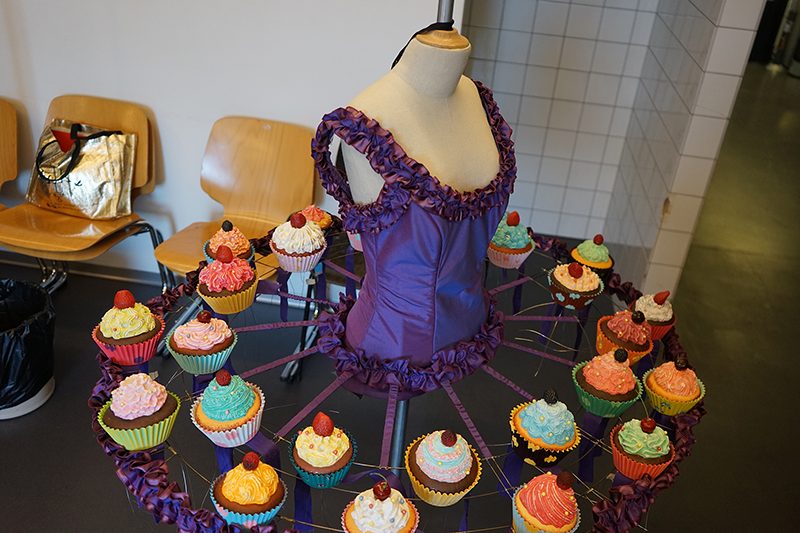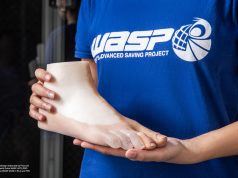With 12 new productions on the main stage, numerous recaptures, concerts, recitals, a wide range of youth programs and more than 300 performances a year, the Zurich Opera House is the largest cultural institution in Switzerland and one of the most productive ones in Europe. For the events, there are various workshops and studios, in which the detailed decorations and costumes are painstakingly and lovingly made. The x400 3D printer from German RepRap is perfectly supporting this creative work. The Swiss reseller KVT-Fastening assisted the Zurich Opera House on location in Switzerland.
The field of application of additive manufacturing technology is manifold – in the case of the Zurich opera house the technology is used especially for the production of props and for mold making. “Often, the wishes and ideas of costume and stage designers are very diverse and sometimes extraordinary,” says Andreas Gatzka, director of theater sculpture at the Zurich Opera House, “it often happens that props are not available in the way designers have it in their minds. This is where the 3D printer is perfect for.” First, the objects are designed in 3D modeling programs and then they get printed with the German RepRap machine. Before they are ready for the stage the objects get further processed, for example, flocked, painted or pasted. Another application example is the figure of the sugar fairy in the ballet of “The Nutcracker”, where the 3D printer was used for mold making.
With its own 3D printer, the opera house is much more flexible and can fully be creative. This saves costs and time through the shorter processes. Gatzka sees further advantages: “There are a lot of great benefits. Special wishes of stage and costume designers can be realized quickly as well as a short-term change of the objects, for example larger, smaller, longer, shorter, or whatever is needed.” Florian Bautz, Managing Director of German RepRap GmbH, is pleased when the customer is satisfied: “It’s great in how many areas our machines are already used. The trend is definitely pro implementing the additive manufacturing process. The technology offers many benefits, such as the possibility to reduce weight and create complex structures, or to increase mold flexibility and shorten production cycles. Another advantage that you can also see in this project is that individual productions now pay off. In conventional production, a single item costs a lot and doesn’t pay off until it can be produced by thousands in mass production. ”
In terms of materials, the opera house currently relies on PLA, as it is well suited for beginners and easy to handle. The great variety of colours and effects plays an important role. In addition, it is flame retardant, which is very important in the theatre area. The finished printed PLA product can also be edited very well. “For the future we would like to use other materials, e.g. ABS, PET-G, nylon or elastic filaments,” says Mr. Gatzka.
Currently, the x400 3D printer is already successfully used in several applications. Furthermore the opera house is already thinking about additional projects where the 3D printer can lead to new opportunities and benefits.
Press contact German RepRap:
Lena Wietfeld
Tel.: +49 89 248 8986-0
Email: presse@germanreprap.com
About German RepRap GmbH
The German RepRap GmbH based in Feldkirchen near Munich was originally founded as the German RepRap Foundation (GRRF) in 2010 and is a German manufacturer of industrial 3D printers “Made in Germany”. The company designs and manufactures 3D printers based on Fused Filament Fabrication (RepRap) technology and, since 2016, the newly developed and globally unique Liquid Additive Manufacturing Technology (LAM). The machines are distributed together with software, filaments and accessories directly and via a worldwide network of qualified distribution partners. German RepRap was the first company in Germany to launch a RepRap-based large-capacity 3D printer for professional users with the x400. The product line is constantly expanding and includes 3D printers for professional use in the areas of product development, prototyping, model and mold making, architecture and design, up to a built platform of 1000 x 800 x 600 mm. Its customers include large industrial companies from many industries worldwide, including automotive, aerospace, medical sector, mechanical engineering as well as designers, architects, artists, universities, discerning private users and much more.
More information: www.germanreprap.com
Subscribe to our Newsletter
3DPResso is a weekly newsletter that links to the most exciting global stories from the 3D printing and additive manufacturing industry.























